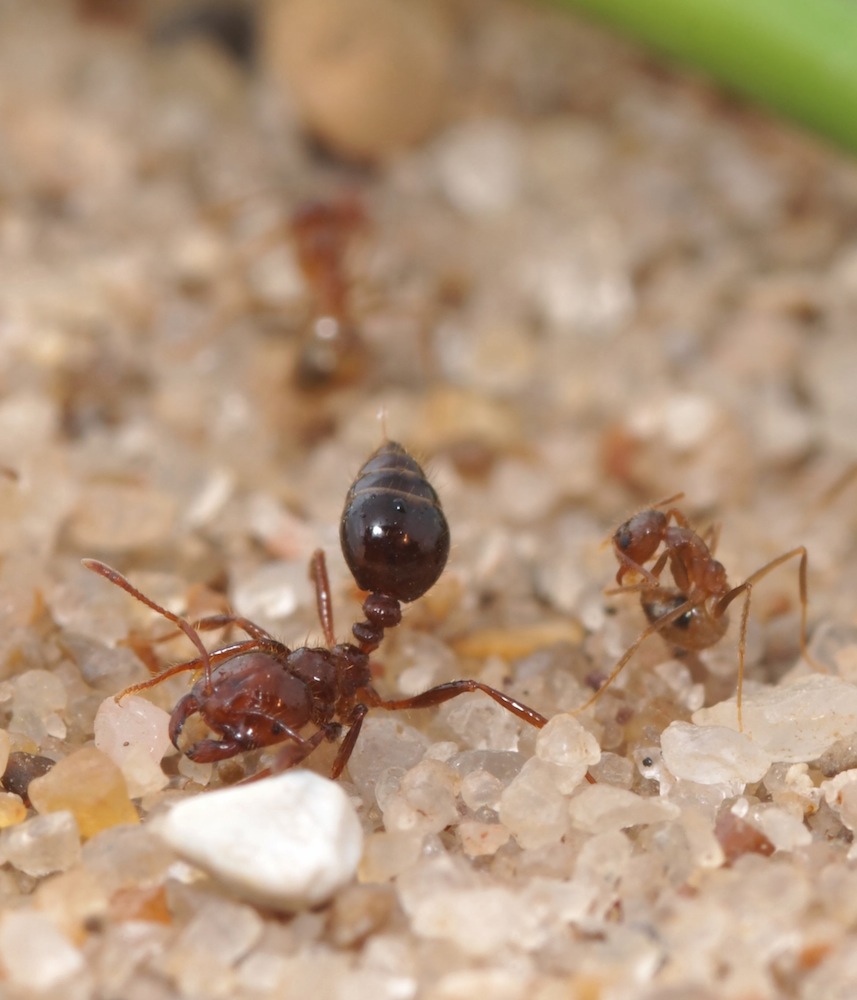Crazy Ants! Secret Weapon Lets Invaders Take Over US South

All over the southern United States, miniature foes are engaging in fierce battle. Invasive "crazy ants" have been displacing fire ants, and a curious defensive strategy may be behind the crazy ants' bold takeover.
Fire ants pack potent venom that kills most ants that come into contact with it. But when crazy ants get stung, they secrete a substance and rub it all over themselves to neutralize the venom, new research finds.
This detoxifying behavior — the first example of an insect capable of detoxifying another's venom — may be the reason crazy ants have been able to compete with the venomous fire ants, according to the study detailed online today (Feb. 13) in the journal Science. [See Photos of Crazy Ants & Video of Crazy Ants Neutralizing Venom]
"As this plays out, unless something new and different happens, crazy ants are going to displace fire ants from much of the southeastern U.S. and become the new ecologically dominant invasive ant species," study leader Ed LeBrun, a researcher at the University of Texas at Austin, said in a statement.
Fire ant-idote
Fire ants (Solenopsis invicta) invaded the U.S. South in the 1930s, hailing from their native South America home. Another South American species, tawny (or raspberry) crazy ants (Nylanderia fulva) — named for their color and their quick, erratic movements — invaded Texas and Florida in the early 2000s, and have been steamrolling fire ant populations in the South ever since.
When fire ants attack, they dab their enemies with powerful venom that usually kills other insects. But LeBrun's team noticed that after crazy ants were dabbed with the venom, they would stand on their hind and middle legs, curl their abdomens — which are covered in glands that secrete formic acid — and smear the acid all over their bodies.
Sign up for the Live Science daily newsletter now
Get the world’s most fascinating discoveries delivered straight to your inbox.
To study how the detoxing substance worked, the researchers sealed off the crazy ants' glands with nail polish and then placed the ants in a container with red fire ants. Only about half of these crazy ants survived after being dabbed with venom by the fire ants, compared with 98 percent of unpainted crazy ants.
The researchers aren't sure exactly how the formic acid protects crazy ants from the fire ant venom. The acid may protect the crazy ant by destroying venom proteins and preventing them from penetrating the ant's exoskeleton.
A crazy coup
Crazy ants and fire ants are both native to northern Argentina, Paraguay and southern Brazil, where their territories overlap. The crazy ants likely evolved their detoxifying behavior alongside their venomous neighbors, the researchers said.
In contrast to fire ants, crazy ants don't confine themselves to mounds in the garden. They crawl inside homes and even swarm inside electronic appliances — shorting out phones, air conditioners and other devices.
"When you talk to folks who live in the invaded areas, they tell you they want their fire ants back," LeBrun told Live Science previously.
Crazy ants don't have as painful a sting as fire ants, but they multiply more quickly and don't eat the same ant poison bait, scientists say. Fortunately, the crazy ant invasion moves slowly, advancing only about 600 feet (180 meters) per year, except if transported in potted plants or vehicles. LeBrun recommends that people check plants for ant nests before buying them, and check their cars before traveling if they live in crazy ant-infested areas.
Other than human activities, geology and climate are the only factors standing in the way of these determined insects, which continue their relentless takeover of the South.
Follow Tanya Lewis on Twitter and Google+. Follow us @livescience, Facebook & Google+. Original article on Live Science.

Crop circles surround Iraq's multicolored 'Sea of Salt' after years of drought — Earth from space
Watch humanlike robot with bionic muscles dangle as it twitches, shrugs and clenches its fists in creepy video
'The parasite was in the driver's seat': The zombie ants that die gruesome deaths fit for a horror movie










